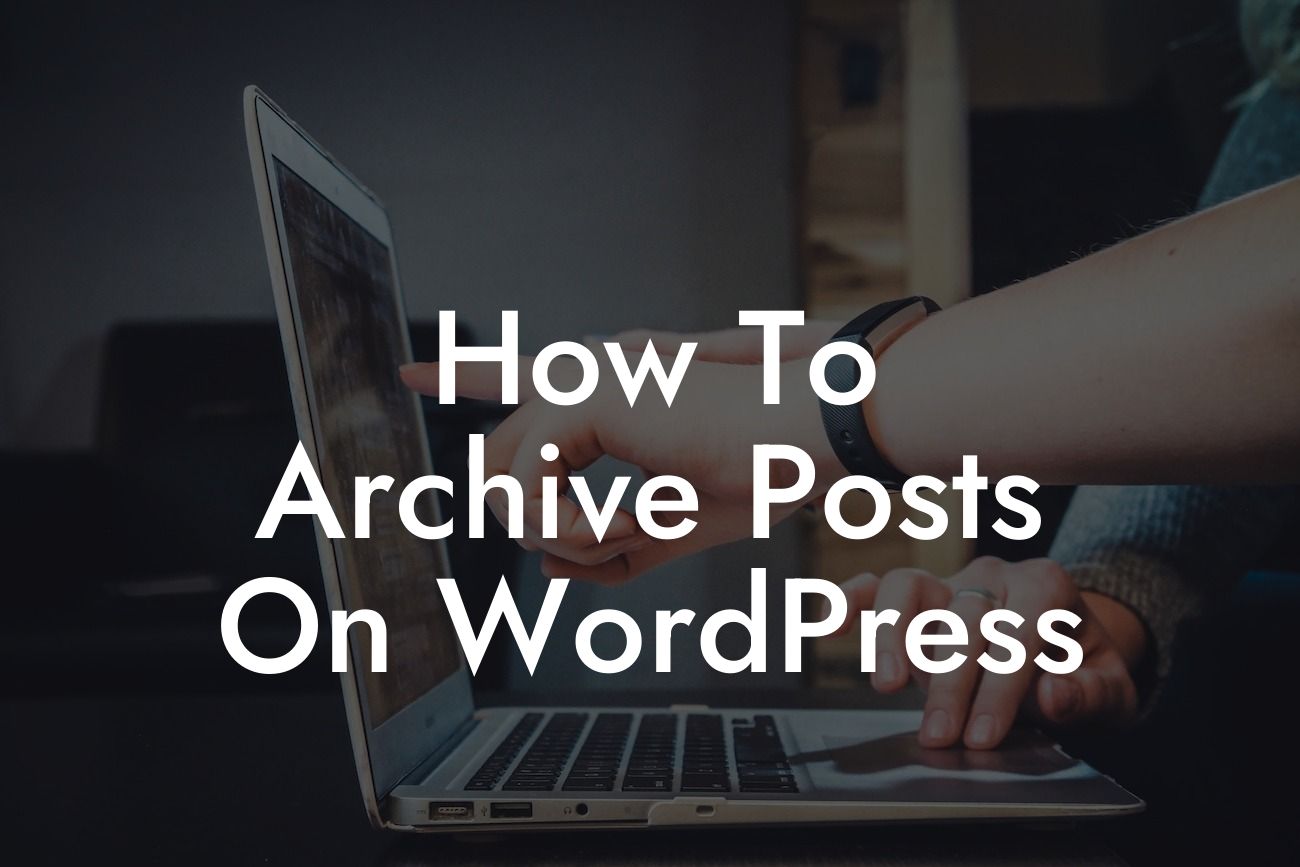Are you struggling with managing an overwhelming number of posts on your WordPress website? Do you find it challenging to keep your content organized, especially as it grows? Archiving posts is the perfect solution to declutter your site and enhance its overall user-friendliness. In this detailed guide, we will walk you through the process of archiving posts on WordPress, revolutionizing your website management. Prepare to embark on a journey towards efficient content organization with DamnWoo's exceptional plugins.
Archiving posts is a crucial step in maintaining a well-structured website. With WordPress, this task becomes exceptionally easy, thanks to its user-friendly interface and extensive range of features. Let's dive into the detailed steps to archive posts on WordPress:
1. Identify the Posts: Before archiving, analyze the posts on your website to determine which ones need archiving. Evaluate their relevance and engagement levels, focusing on outdated content or posts that no longer serve a purpose.
2. Install an Archiving Plugin: WordPress offers a wide variety of plugins specifically designed to streamline the archiving process. DamnWoo's ArchivePress plugin is an excellent choice, providing advanced functionalities and seamless integration with your website. Install and activate the plugin for a hassle-free experience.
3. Configure Archiving Options: Once the plugin is installed, navigate to its settings page. Customize the archiving options based on your preferences and website requirements. Define criteria such as the age of posts, specific categories or tags, and the number of posts to archive at a time.
Looking For a Custom QuickBook Integration?
4. Archive the Posts: After configuring the settings, proceed to archive the selected posts. The plugin will automatically move the chosen posts to a designated archive section. This process ensures that your content remains accessible for future reference while decluttering your main website pages.
5. Enhance Navigation: To provide a seamless user experience, update your website's navigation menus to include the newly created archive section. This step enables visitors to easily explore archived content and discover valuable information, even from older posts.
How To Archive Posts On Wordpress Example:
Imagine you have a personal finance blog, and over time, your website accumulates numerous posts on various finance topics. To improve user experience and simplify navigation, you decide to archive posts older than two years. With DamnWoo's ArchivePress plugin, you effortlessly configure the settings to automatically move these older posts to the archive section. As a result, visitors can access your new content more easily, while the archived posts remain accessible for those seeking historical information.
Congratulations! You have acquired the knowledge and skills to effectively archive posts on WordPress. By organizing your website's content, you have optimized user experience and navigation, ensuring visitors can easily access valuable information. Make the most of DamnWoo's innovative plugins tailored for small businesses and entrepreneurs. Explore our wide range of plugins to further enhance your online presence and achieve unprecedented success. Don't forget to share this guide with others and stay tuned for more valuable articles on DamnWoo!













